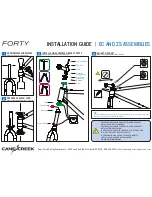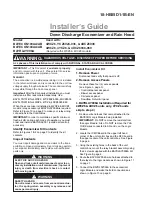
SPECIFIC GRAVITY MEASUREMENT
DETERMINING THE STATE OF CHARGE OF THE BATTERY
Dilution of the electrolyte during discharge is a useful guide to the state of charge of
a lead acid cell. The less acid there is in the electrolyte, the less dense it is, and the
lower its specific gravity. One cubic centimetre of water has a mass of 1 gram. In
other words, its density is 1 gram per cm3 at 4°C. Specific gravity is the ratio of the
density of the substance measured to the density of water. The density of water at
4°C is 1.000 g/cm3. The specific gravity of water is therefore usually expressed as
1.000.
Density could also be expressed as the mass of the liquid divided by the mass of an
equal volume of water.
Specific gravities are usually measured with a hydrometer. This works on the
principle that a float will sink further into a liquid of low specific gravity than of high
specific gravity because the latter is denser and provides greater support.
USING THE HYDROMETER
From one of the cells, draw acid into the barrel until the hydrometer float moves
freely. Now read the specific gravity at the point where the scale emerges from the
acid. Afterwards, make sure the acid is returned to the cell from which it was drawn,
or the specific gravity and acid level of both cells will be altered.
When taking a reading
• Make sure that there are no air bubbles under the float.
• Bring your eye level with the acid surface in the barrel of the hydrometer.
• Ensure that the hydrometer is in a vertical position.
• If necessary, shake the hydrometer gently to enable the float to move freely.
• If the ambient temperature differs from the battery temperature, draw in electrolyte
to warm the hydrometer first.
• Read off against the lower meniscus.































